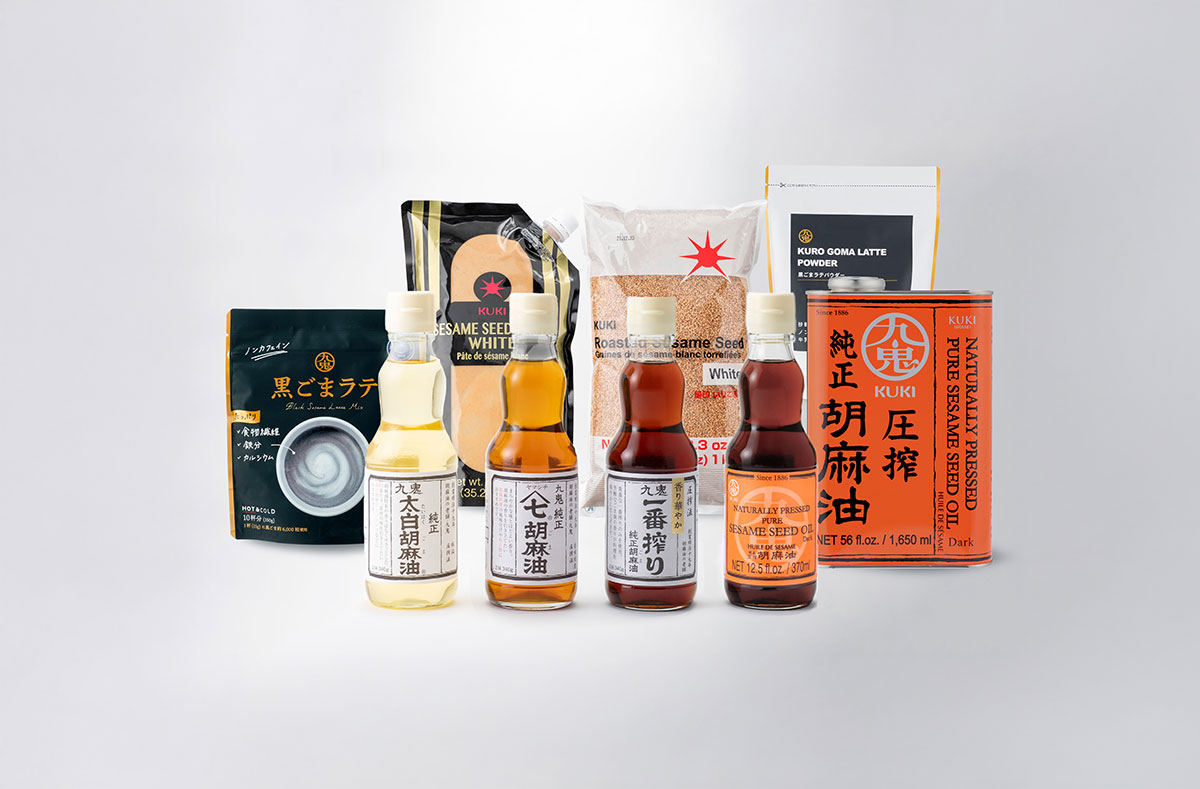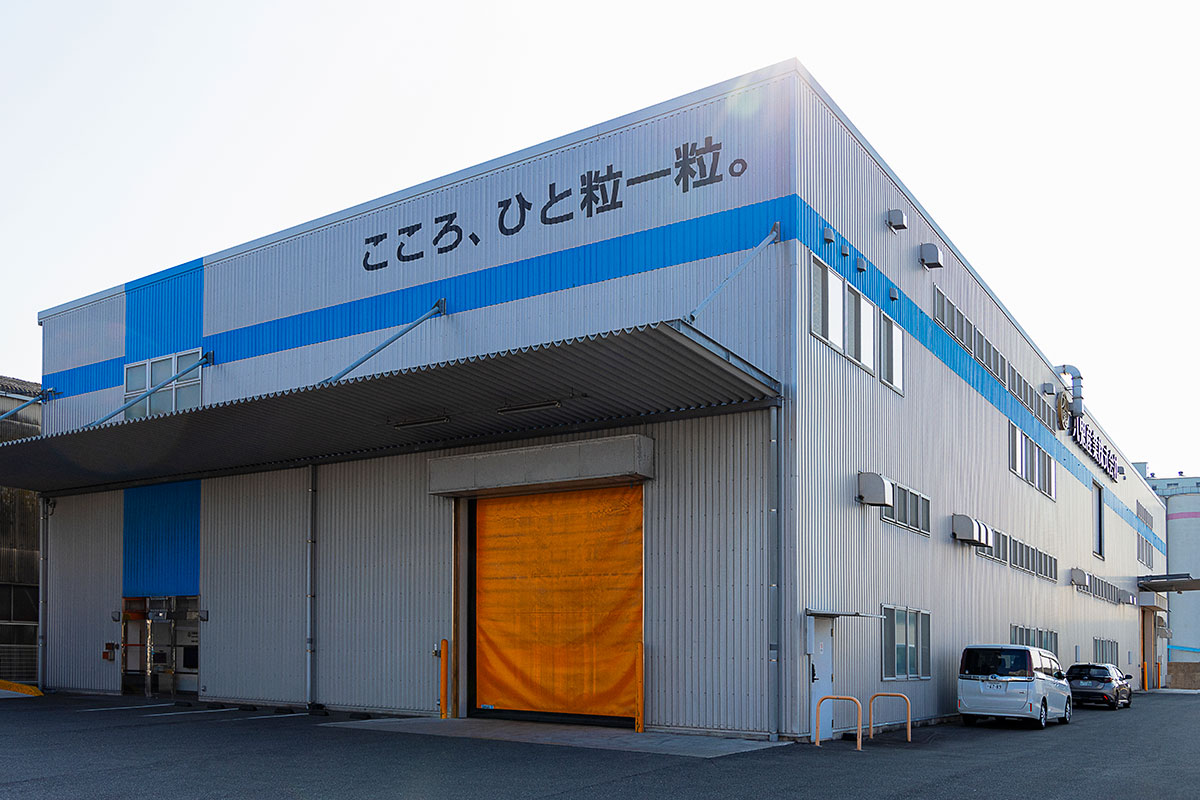With almost 140 years of experience producing high quality sesame oil, Kuki Sangyo continues bringing new products to market, surprising and delighting the world with the versatility of sesame.

By Daniel de Bomford, Bernard Thompson and Cian O’Neill
For over 3000 years sesame oil has been cherished as a staple in cuisines around the world. Rich in antioxidants, vitamins and healthy fats, sesame is a superfood that enriches and supports healthy living. The nutty mouthwatering aroma enhances dishes, from stir fries to tahini-based dishes—engaging both our senses of taste and smell.
Kuki Sangyo Co., Ltd. is approaching 140 years of sesame oil production and has continuously pushed the boundaries of sesame-based foods, from pastes to lattes.
Company President Hiroyuki Tanaka believes that sesame oil’s recent rise in popularity has been due to an increase in health-conscious consumers. With all its health benefits and its unique composition, it is an attractive alternative to other oils. He explains that sesame oil is resistant to heat and has oxidation stability, allowing it to be used repeatedly for frying while remaining aromatic. “Sesame oil can be used as a substitute for olive oil or vegetable oil, as dressing on salad, as a stir-frying oil,” he says.
Despite a declining population, sesame seed imports have steadily increased in Japan increasing from 150,000 tons to 180,000 tons, largely due to new product developments. Mr. Tanaka says that Kuki Sangyo has been trading globally for a long time and it has resulted in growth in its top line. “Our sales volume in overseas markets has tripled over the past ten years and we are highly interested in exploring opportunities in overseas markets,” he says. Kuki Sangyo’s impressive overseas growth is fueled predominately by exports to America and Southeast Asia. The North American market is its largest market, where sales have tripled over the last 10 years. Because of its internationalization efforts, Kuki Sangyo was the first sesame oil company to achieve a halal certification. This opens entirely new markets, especially in Southeast Asian countries such as Indonesia and Malaysia.
The sales increase is driven by the quality of Kuki Sangyo’s products delivered over the last century. Mr. Tanaka says that its classic Kuki Yamashichi Pure Sesame Oil is its flagship product. It began in 1886 producing sesame oil, and after WWII it began roasting sesame seeds before producing sesame paste in 1970. The long history of reliability is what gives customers confidence in its sesame products. “As a company, we have always considered quality to be one of the most important factors,” Mr. Tanaka says. The Kuki Sangyo brand is trusted by customers due to its association with high quality.

Bottling plant for sesame oil
To maintain that quality, Kuki Sangyo utilizes a pressing method for all of its sesame oil. Mr. Tanaka explains, “For typical conventional edible oils, you often use organic solvents to squeeze out all of the oil, but we just use pressure instead,” he says. This method maintains the quality without the need for solvents. For paste, it leverages a physical method to peel the seeds to peel the skin in its domestic factory. “As for the white sesame seed paste, we carefully peeled without the use of chemicals, to bring out the rich, natural flavor of the sesame seeds,” he says.
Mr. Tanaka believes that with the rise in international popularity of Japanese cuisine, consumers will begin to accept sesame oil into their kitchens. “The richness and depth of sesame oil adds depth to dishes and creates a flavor that cannot be replaced by other oils,” he says. He acknowledges that it is unlikely to completely replace other oils, the versatility and aroma make it the perfect choice for a wide variety of dishes.
With its 140th anniversary around the corner Mr. Tanaka reflects on Kuki Sangyo’s history. Beginning with sesame oil, before moving into roasted sesame and sesame paste, he hopes the fourth pillar of the business will be its sesame latte, which uses sesame powder as an ingredient. Mr. Tanaka envisions a future where Kuki Sangyo’s legacy of innovation continues to thrive—sharing the rich, nourishing essence of sesame with the world for generations to come.
0 COMMENTS